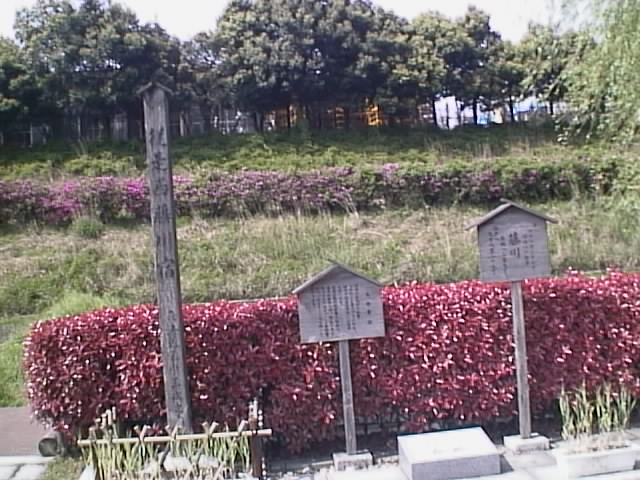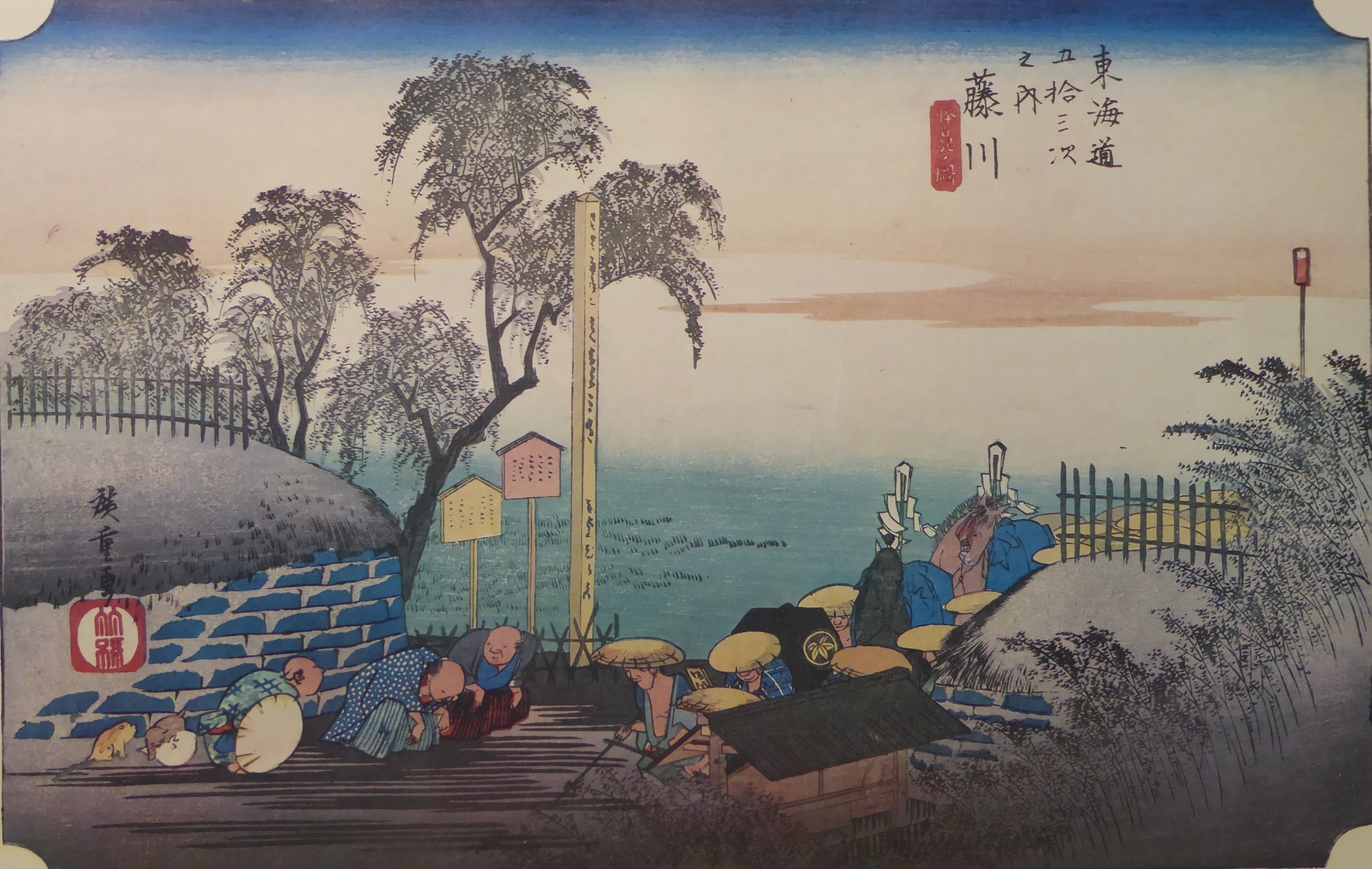Explanation of the Fifty-three Stations of the Tokaido 38 Fujikawa
6.7km from Okazaki to Fujikawa 34°54’41″N 137°13’20″E
Fujikawa is the 37th station on the Fifty-three Stations of the Tokaido.
It is located in the current Fujikawa-cho area of Okazaki City, Aichi Prefecture.
It has been a key transportation point since the Middle Ages, and was established in 1601 under the Tenma system.
According to the Tenpo era “General Register of Inns and Villages,” there were 1213 people (540 men and 673 women) in the inn, including 1 main inn, 1 side inn, 36 inns, and Ichiba Village, with a total of 302 households, 7 koku of rice provided to wholesalers, and over 32 koku of rice provided to couriers.
The horse and man wholesaler was located in Nakamachi, with 2 wholesalers, 5 elders, 4 supporters, 6 couriers, 6 horse and man carriers, 6 envoys, 100 horses and man, and 5 horses and mansions.
In 1707, the total number of horses and manpower was 38,017, and 55,627 horses.
In the November 1714 report on horses and manpower of the Ryukyu envoys, it states that there were 1,000 goshuin (red seal) workers and 200 horses.
During the epidemic of 1772, about 400 people died of illness, and the inns fell into great debt due to poverty.
Fujikawa-shuku is the only place in Aichi Prefecture that has been designated as a historic national highway.
The remains of the wakihonjin are designated as a historic site by Okazaki City, and the Komahiki shuinjo (red seal letter) and the high notice are designated as tangible cultural properties of the city.
The Fujikawa-shuku Museum was completed in 1990.
Sekiyama Shrine has historical materials such as a 1601 denma shuinjo (red seal of horses).
A 1741 building inscription and a 1711 inn sign remain.
The Wakihonjinmon gate, stone walls, and row of houses remain, and the inn maintains one of the best scenery in the city.
The old Tokaido road is lined with pine trees stretching for about 1km.
Fujikawa-juku, along with the pine trees and purple barley, has been selected as one of the 100 best sightseeing spots in Okazaki.
① “Hoeido version”
A pole-shaped signpost is set up at the boundary between the road and the inn.
As the pole-shaped signpost is found at the entrance and exit of the inn, it is thought to be the entrance to the main inn.
The composition shows officials from the inn welcoming the “Hassaku Imperial Horse Presentation” procession at the entrance.
Hassaku refers to August 1st.
The shogunate held this day as an important ceremony to present horses to the Imperial Court.
The horse in the procession with a gohei (sacred wand) is the horse that will be presented.
Three puppies are frolicking in the left corner. The village official on the right is interested in them. It is a detailed depiction.
Hiroshige accompanied Hassaku Onuma Shinken in 1832.
This was the impetus for publishing the Fifty-three Stations of the Tokaido series.
② “Gyousyo version”
This is a mountain landscape just before the post town, depicting a steep slope.
The signs of the two shops on the left say “Mountain specialty: hemp rope crafts.” There are many hemp rope shops.
The shop on the right is depicted with just the roof.
③ “Reisho version”
This depicts a procession of feudal lords slowly descending the slope.
The road seems wide considering it is in the mountains.
④ “Hokusai version”
This depicts a female traveler on an ordinary horse, not the horse of Hassaku Onuma Shinken.
⑤ “Travel image”
This is a signboard for Fujikawa-shuku.
⑥ “Stamp image”
Fujikawa Station is an unmanned station, so there are no stamps or ticket vending machines.
Hoeido version
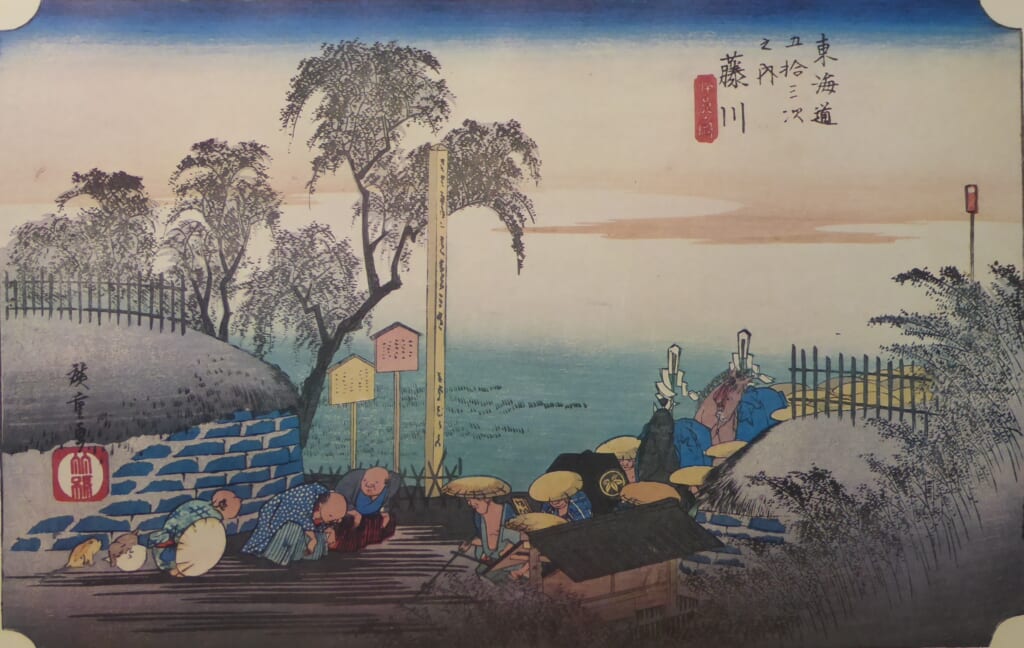
Gyousyo version
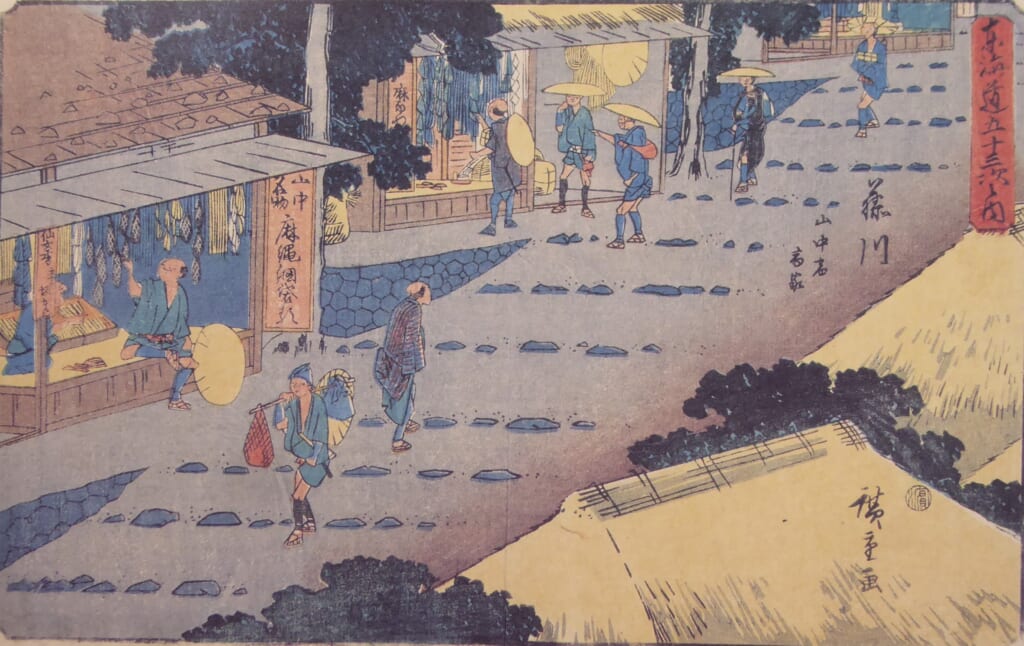
Reisho version
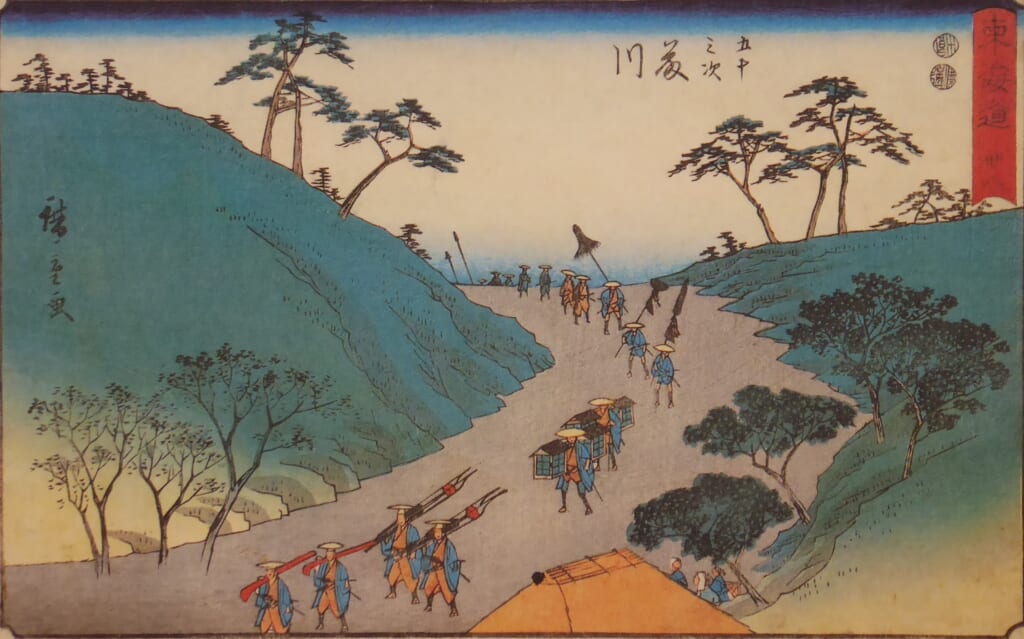
Hokusai version
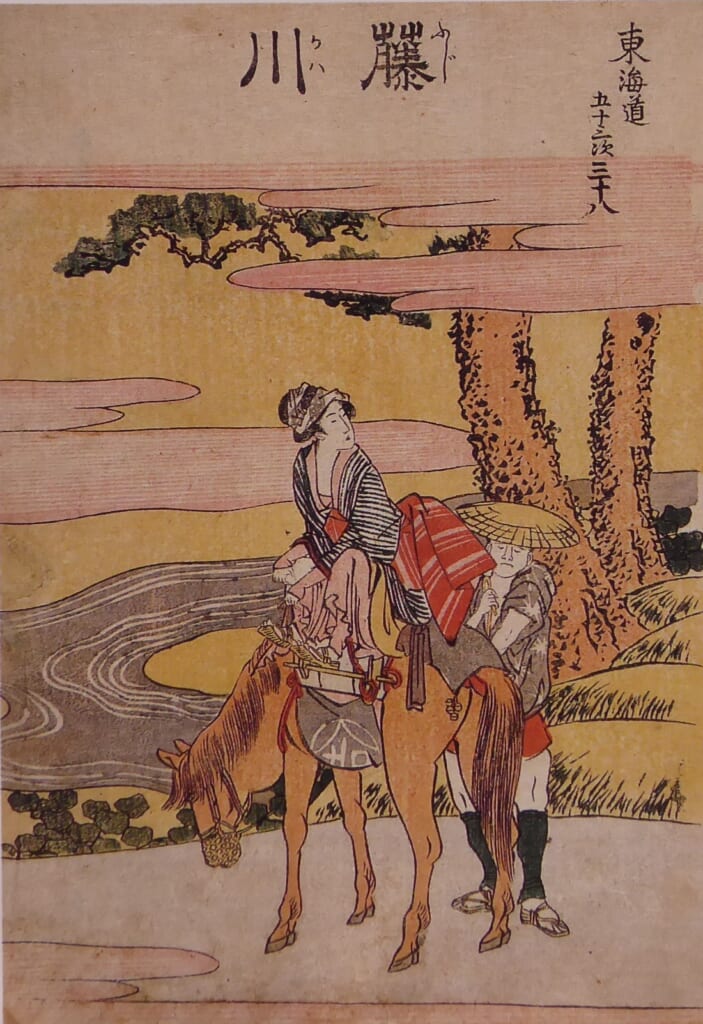
Travel image
